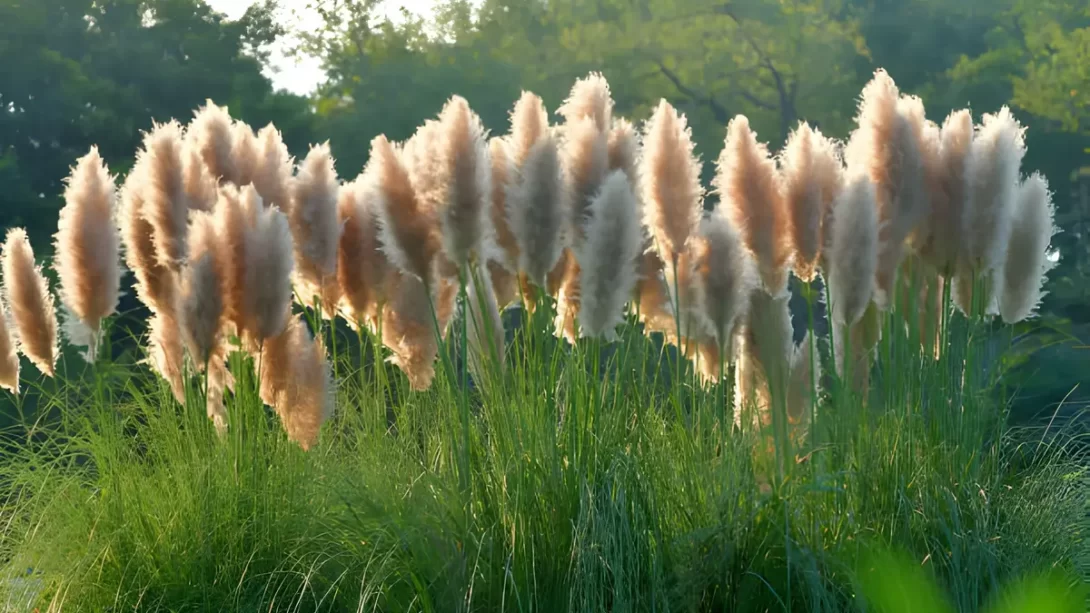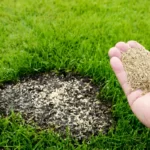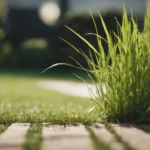Pampas Grass (Cortaderia selloana), known for its striking, feathery plumes and tall stature, is a popular choice in many landscapes and gardens. Originating from South America, this ornamental grass has captivated gardeners worldwide with its graceful appearance and ease of care. A common question among enthusiasts is: how long does Pampas Grass last? Understanding its lifespan and how it thrives in various environments is essential for anyone looking to incorporate this plant into their garden.
Pampas Grass
Pampas Grass is characterized by its large, fluffy plumes that can reach up to 10 feet tall, making a dramatic statement in any landscape. The grass itself forms dense clumps and can spread several feet wide. There are several varieties, ranging in color from silvery-white to sandy-pink. Pampas Grass is best suited for USDA growing zones 7 through 11, thriving in full sun and well-drained soil. Its preference for warm, temperate climates makes it a popular choice in many regions, though it can also tolerate some variation in conditions.
Lifespan of Pampas Grass
On average, Pampas Grass can live and thrive for about 10 to 15 years under optimal conditions. This lifespan is quite significant for an ornamental grass, making it a long-term feature in gardens and landscapes. The key to achieving this longevity lies in both the natural hardiness of the plant and the care it receives. Factors such as soil quality, climate, and maintenance practices play a crucial role in determining how long Pampas Grass will flourish in a specific setting. It’s important to note that while the grass itself is long-lived, individual plumes may last only one season before new ones emerge.
Seasonal Growth and Dormancy
Pampas Grass goes through distinct growth phases throughout the year, adapting to seasonal changes. In spring and summer, it enters a vigorous growth phase, producing new shoots and the iconic plumes by late summer or early fall. These plumes can remain visually striking well into winter, offering aesthetic value even in dormant periods. During winter, especially in cooler climates, Pampas Grass enters a dormancy phase. The foliage may die back, and the plant conserves energy. This dormancy is a natural part of its cycle and vital for its long-term health and survival.
Maintenance and Care for Longevity
Proper maintenance is key to extending the life of Pampas Grass. Regular watering, especially during dry periods, helps maintain its vigor, although it’s important to note that Pampas Grass is relatively drought-tolerant once established. Fertilization can be beneficial, but should be done sparingly – an annual application of a balanced fertilizer is typically sufficient. Pruning is also crucial; cutting back the grass to about a foot high in late winter or early spring clears old growth and stimulates new shoots. Additionally, keeping an eye out for pests and diseases and addressing any issues promptly can prevent problems that might shorten the plant’s life.
Potential Challenges and Solutions
While Pampas Grass is generally hardy and low-maintenance, it can face several challenges that may impact its lifespan. Common issues include fungal diseases, such as rust or root rot, often exacerbated by overly wet conditions. Pest infestations, though less common, can also occur. To combat these issues, ensure good air circulation around the plant and avoid overwatering. In cases of severe disease or pest problems, appropriate fungicides or pesticides can be used as a last resort. Environmental stress, such as extreme temperatures or poor soil conditions, can also affect the health of Pampas Grass. Adapting care practices to your specific environment can mitigate these stresses.
Propagation and Renewal
Over time, the center of a Pampas Grass clump may start to die out, a natural part of its growth cycle. To rejuvenate the plant and potentially extend its overall lifespan, propagation is often recommended. This can be done through division or seeding. Division involves splitting the large clump into smaller sections, which can then be replanted. This is best done in late winter or early spring before new growth begins. Seeding, although less common due to the plant’s size and growth habit, can also be an effective way to propagate Pampas Grass. These methods not only renew the plant but also help in managing its size and preventing overcrowding in the garden.
Conclusion
Pampas Grass, with its majestic plumes and easy-care nature, can be a long-lasting addition to any garden, often thriving for 10 to 15 years. This longevity is influenced by several factors, including the plant’s natural growth cycle, seasonal changes, and the care it receives. Proper maintenance, addressing potential challenges promptly, and employing propagation techniques as needed are all key to maximizing the lifespan of Pampas Grass. By understanding and respecting these aspects of its care, gardeners can enjoy the beauty and presence of Pampas Grass in their landscapes for many years. Whether as a statement piece or a part of a mixed border, Pampas Grass remains a popular and enduring choice for gardeners seeking both drama and durability in their plant selections.



